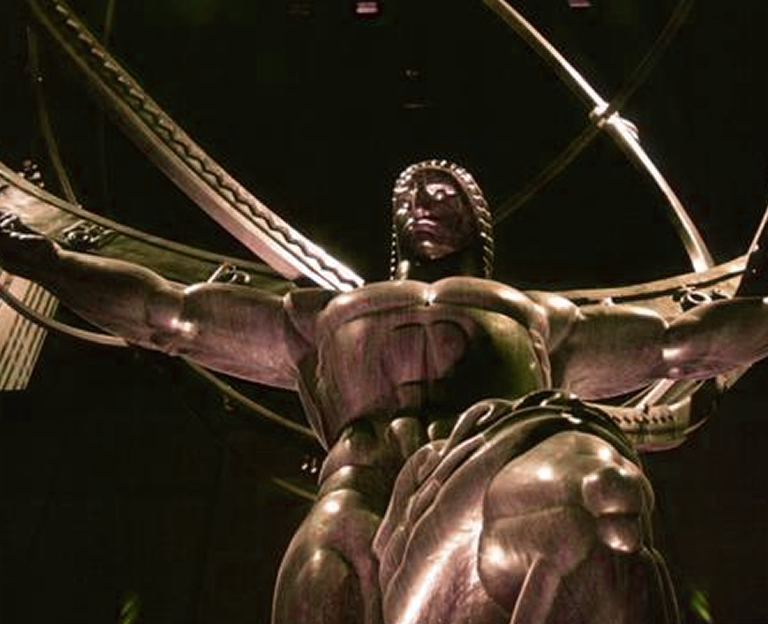Executive Search
LeaderShift Interview
As executive recruiters, we want every candidate we place to be a good match. A good match can only be determined through discerning and time-consuming interviews. Mastering the LeaderShift Interview process is the only way to consistently identify and select high-level candidates that are most likely to be high performers. To find first-rate candidates, you need advanced recruiting practices, and then best process in the LeaderShift Interview process.
What is the LeaderShift Interview?
LeaderShift Interview is an interview technique that gives a comprehensive picture of a candidate’s professional background and personality. LeaderShift involves more thorough screening methods than a regular behavioral interview.
The goal of LeaderShift is to build a high-quality workforce with top-performing employees. A series of interviews are conducted for an in-depth perspective on each candidate. Throughout the LeaderShift Interview process, interviewers look at patterns in the candidates’ answers.
There are 12 steps to LeaderShift. The steps can be modified or shortened to fit your recruitment needs.
LeaderShift Interview Process
If you are looking for the most qualified candidate, consider using LeaderShift. The process helps you make well-educated and evidence-based hiring decisions instead of relying on resumes or general job applications to find the best candidate.
The following is a complete list of the LeaderShift Interview process. Depending on the job needs, you can simplify or eliminate some steps.
1. Measure and improve the current hiring process
You can use the first step to help from the start of the hiring process. Take a look at your current methods for hiring. Find out how many high-performers are employed and how many bad hires you make.
Continuing to fly by the seat of your pants or the continues use of outdated interview techniques will result in more mis-hires. Success requires standardizing and improving the current hiring process. For example, you might notice that the job description are vague and poorly written. Get some help developing a comprehensive performance profile.
2. Create a LeaderShift Scoreboard
Before you start your search, have a clear idea of the candidate needed for the position. Talk to stakeholders about what the ideal candidate looks like on paper. It might take some digging to get a full list of details. But, you need the big picture of the best candidate before you start.
Choose 15-20 criteria points to compare candidates. You will score each candidate based on how their answers match up to the criteria. The scores will show each candidate’s strengths and weaknesses.
3. Recruit Candidates
If you’re not going to utilize the services of the Hunt Group to source and recruit candidates, start your search with a job advertisement that lists the skills, experience, and personality traits needed for the position. The description must be detailed.
It’s a low probability a true “A” player (top 20% amongst peer group) is going to answer a job post. You have to recruit “A” players on purpose. Reach out to people in your network that are proven to be high-performers.
4. Screen Candidates with Work History Forms
A work history form is a comprehensive list of LeaderShift Interview questions that ask about a candidate’s past. The form asks for compensation histories, boss ratings, reasons for leaving jobs, likes and dislikes in jobs, self-appraisal, and more.
By using a work history form, you can weed out weak candidates that bend the truth on resumes. Since the form asks each candidate the same questions, you spend less time reading and deciphering resumes.
5. Conduct Screening Interviews
Once you have a pool of promising candidates from the work history forms, set up screening interview via video or telephone. A screening interview saves time that would be wasted on unsuccessful in-person interviews.
While on the phone, briefly explain the job in more detail. If the candidate is interested, take about 45 minutes to ask about their most recent jobs. You might ask about their passions, successes, failures, key decisions made, and goals. From this point, narrow down the candidates you want to interview face-to-face or more in-depth.
6. Do Competency Interviews
Competency interviews cover more general topics about proficiency and behavior, providing quick insight on candidates. The interviews are usually about an hour long. Give candidates the chance to ask about the open position and work environment.
7. Conduct an In-Depth Interview
The LeaderShift Interview is a thorough review of the candidate’s past jobs and experiences. This intensive interview creates a roadmap to where the candidate is today. Ask questions about past events, motivations, successes, and failures that led to their current skills, knowledge, and values.
The LeaderShift Interview is chronological, in-depth, structured (CIDS) interview. It starts with high school and ends with goals for the future. This interview asks a lot of questions about every job the candidate has held.
The process appears drawn out, but it’s not as burdensome as it sounds. Using the work history form, follow a LeaderShift Interview Guide, ask questions, and take notes. It’s the only way to glean the requisite insights necessary to qualify “A” player candidates and assess fit in the job and culture.
8. Provide Feedback and Coaching to Interviewers
With the LeaderShift Interview, the interviewers give each other feedback directly after the interview. This helps improve each interviewer’s skills. Discuss the interviews with your stakeholder after the process is over and offer tips to improve the process.
9. Write a Summary
A summary shows patterns in the candidate’s work history and experiences. Analyze the data collected about the candidate by compiling it into a logical summary. That way, it’s easy to compare potential hires.
10. Have the Candidate Arrange Reference Calls
After the interviews are completed, have the candidates arrange reference calls. They need to contact references and set up the reference interviews.
Step 10 is a unique but non-negotiable part of finding the best candidate. High performers usually don’t have a problem with contacting old bosses. In fact, they most often leave the job on good terms and enjoy the opportunity to catch up.
Once the references are contacted, place each candidate in one of the following categories:
• Top 10%
• Next 25%
• Others
With the LeaderShift Architect process and tool, it should result in only the top 10 percent of candidates being hired. These are the most qualified and will likely be high performers.
11. Coach the New Hire
The candidate hiring process doesn’t stop with the job offer. Go over post interview debriefing and onboarding with the selected candidate. Give the candidate recommendations so they know what is expected of them and can improve weak performing areas quickly.
It doesn’t make much sense to hire the perfect candidate and send them straight into a bad new hire experience. Make sure all the appropriate stakeholders are prepared to train and encourage new hires to succeed. Employers should coach new hires on these three points within the first few weeks:
• Onboarding
• Boosting immediate performance
• Developing for future positions
12. Measure Hiring Success
As a recruiter, we are not in control of our client’s actions once a candidate is placed. But, we talk to clients about the importance of measuring employee performance. We advise clients to review employee performance and hiring success regularly and not just annually to keep the team focused on performance year-round.
LeaderShift Interview Questions
LeaderShift Interview questions are designed to piece together a candidate’s experiences. Interviews help you understand the candidate’s thought process, values, and communication skills. Including behavioral interview questions in your list is a great way to improve the LeaderShift process.
TheLeaderShift Interview guide lists numerous example questions most commonly used in LeaderShift, but it is not comprehensive, and each LeaderShift Interview team member should develop their own questions set. Remember to ask LeaderShift Interview questions chronologically and the same questions to each candidate to most accurately compare and contrast in the selection of an all “A” player team.



